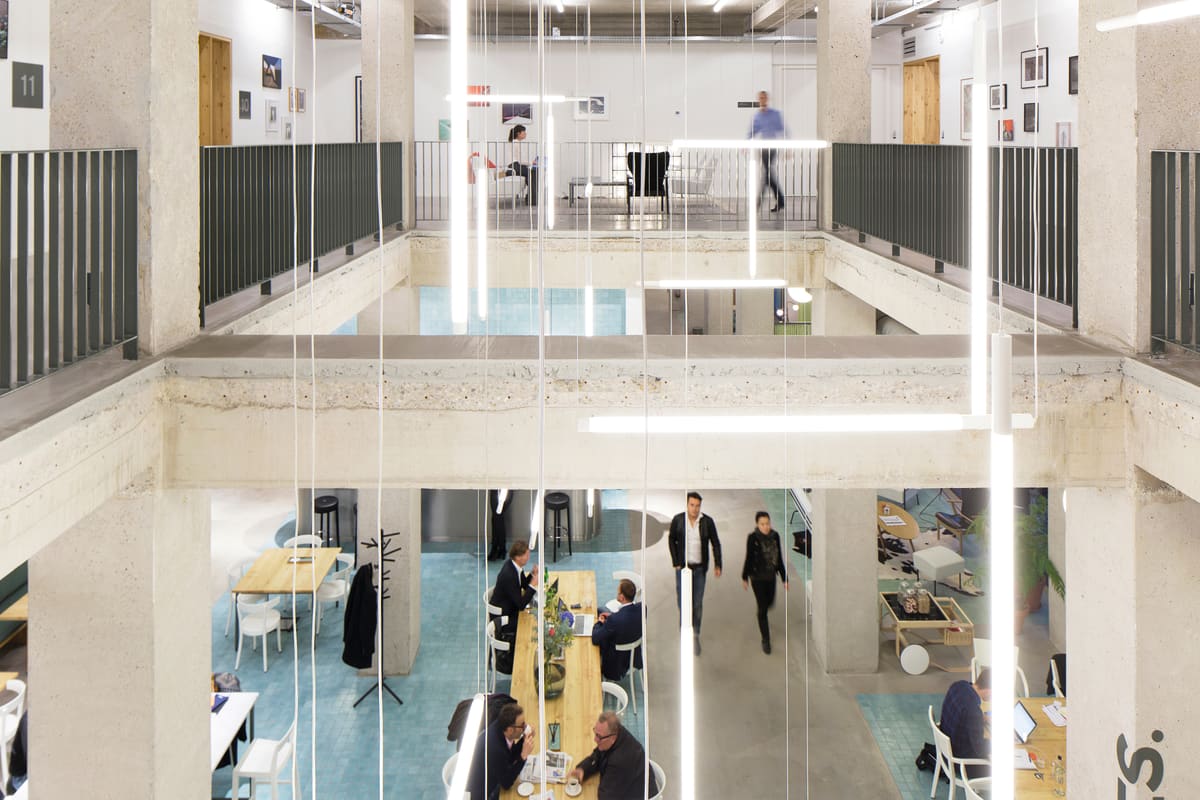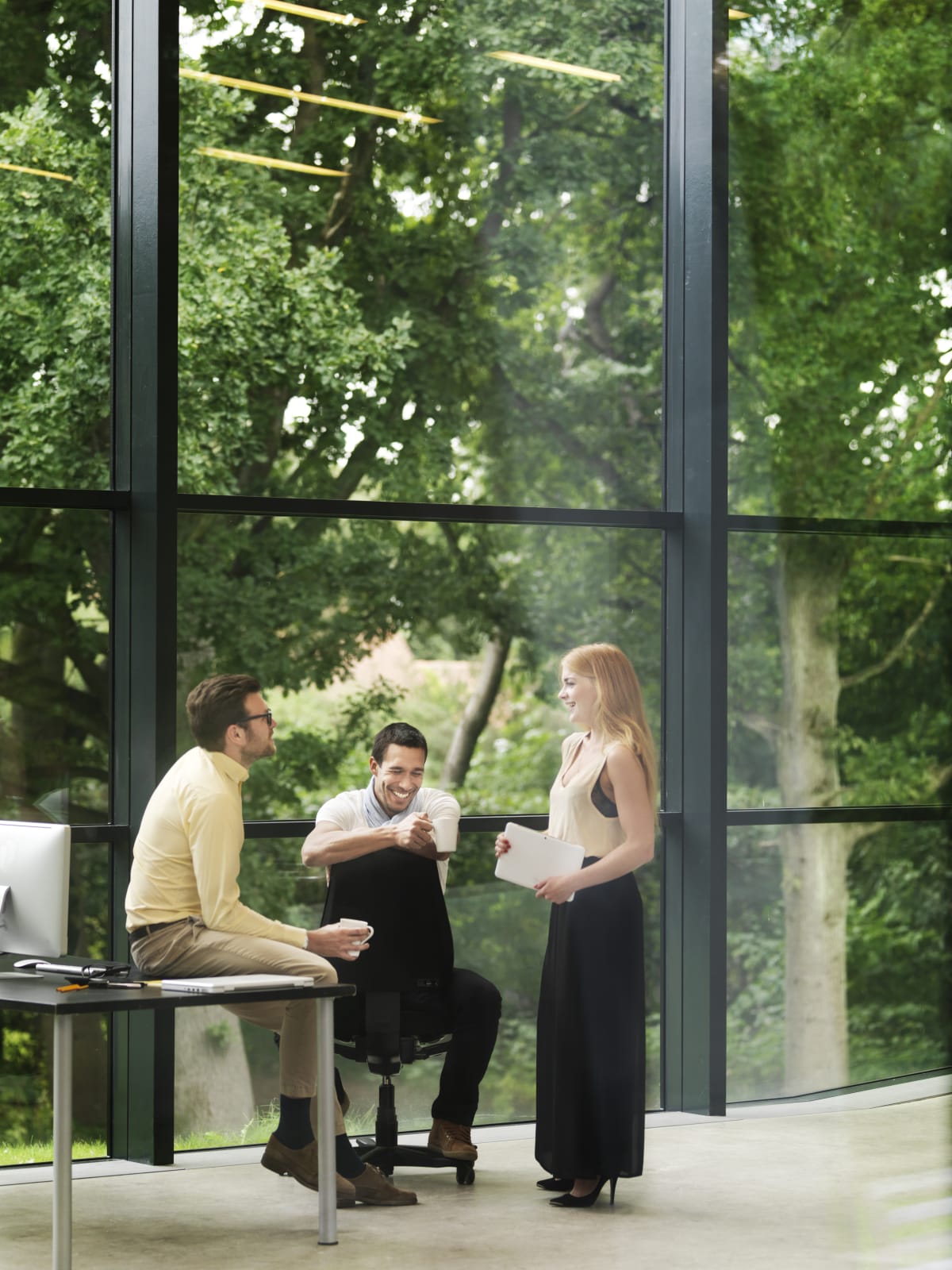From slowing the tide of urbanisation, to a boom in virtual reality, the lasting impact of the pandemic will redefine the CRE landscape
After the chaos of 2020, it’s harder than ever to make predictions about the future of any industry. However, with what we already know about the changes Covid-19 has made to the way businesses operate, we’re making five educated guesses on what the pandemic could mean for landlords and property owners.
1. The end of urbanisation?
A year of intermittent lockdowns, travel restrictions, social distancing, a shift to home working and growing concerns over the environmental impact of commuting – not to mention the drudgery of sitting in stagnant road traffic – has brought the realisation that office work doesn't necessitate congregating in urban tower blocks five days a week. Then there’s the need to de-densify the workplace and instigate scrupulous hygiene protocols
Could the cumulative effect of all these (mostly pandemic-induced) factors actually reverse the megatrend of urbanisation? It's a question that's haunting the corporate real estate world’s movers and shakers. For the moment, the jury’s out. A recent PwC CEO Panel Survey says company bosses "are divided about what role cities will play in the future with a third believing the shift towards de-urbanisation is enduring with another third believing it is temporary”.
Feedback from CEOs is that "a new hybrid model is emerging with work being ‘something people do rather than a place to go to,’" with 24% of CEOs already prioritising digital adoption as well as making their workforces more flexible, smaller, leaner and more agile.
In the UK, it's a shift underpinned by real estate reports, which indicate a dramatic increase in house buyer enquiries outside London. Clearly flexible working means reassessment of commute times and evaluation of whether moving away from urban centres translates into better house affordability.
Mapping this trend globally presents opportunities for office-based businesses to shift closer to the periphery – rather than the centre – of cities.
2. The rise of the suburbs
While urban business districts may have been in a state of semi-hibernation over much of last year, interest in suburban office space has perked up. “[We’ve seen] a pivot into the suburbs and the rings round London, Birmingham and Manchester,” says IWG’s CEO, Mark Dixon.
Two-thirds of IWG’s 3,500 offices around the world are in suburbs and smaller towns. The firm has about 350 offices in the UK, 60% of them in suburban areas or small towns.
It's a trend that's been picked up in the RICS UK Commercial Market Survey, where 64% of respondents, when asked whether they anticipated demand for office space in suburban locations may rise in place of urban centres, "felt this shift would occur".
Specific examples of new suburban workspaces include Spaces 109 South 5th Street in New York’s Williamsburg, as well as Regus Hammfelddamm 4A in Neuss, just across the Rhine from Dusseldorf, putting occupants just 10 minutes away from the city centre by train.
3. A boom in virtual office spaces
Now that we're all conversant with online video-conferencing, the next logical step is the adoption of virtual office spaces using Virtual Reality (VR) tools for an immersive experience that replicates not just transactional exchanges of information but also more of the social interaction that's been missing when working from home.
The race is on to become the 'go to' virtual platform right now, with contenders such as Branch or the 3D headset-based Oculus Business platform which offer user-interfaces similar to those in the role-play gaming world, enabling co-workers to roam the virtual office and informally convene in meeting rooms.
Workplace from Facebook offers a suite of collaborative features that provide familiar ways to share information with the right people at the right time. Groups can be formed to hold in-depth discussions and share info and documents, and live meetings can be augmented with video captions and translations.
In Gather, workers can host classes and workshops or virtualise an auditorium. The platform allows users to see and hear co-workers around them and create "private spaces," where "everyone inside can see each other, no matter how far they are with no video/audio fading."
4. Bricks and mortar offices aren’t going away
Despite the buzz surrounding the new frontier of VR, not everyone wants to be glued all day to a screen or have 3D goggles strapped to their head. And the "gamification" format of interaction might not have universal appeal.
Findings from the CBRE’s Future of the Office client survey – which solicited insights from senior global real estate executives – show that between June and September 2020 the percentage of organisations that see the role of the office as important because it provides a place for employees to experience community and social interaction shifted from 70% to 100%. Similarly, respondents saw the office’s role in providing a place for the company to attract talent rise from 80% to 87.5%.
True, at the start of the pandemic 80% of people surveyed by McKinsey reported that they enjoyed working from home, and 41% said they were more productive. But the same study questions whether this is due to “the social capital built up through countless hours of water-cooler conversations, meetings, and social engagements before the onset of the crisis”.#
5. Flexspace is a key part of the recovery
What is more predictable, however, is that as populations become vaccinated and a fuller scale return to the office kicks in, flexspaces will play a significant role. Research by McKinsey points to a post-Covid environment where companies operate "a portfolio of space solutions: owned space, standard leases, flexible leases, flex space, co-working space, and remote work”.
Another study of the impact of the pandemic on real estate by Savills Research shows that, despite unprecedented financial pressures across the commercial real estate landscape, "62% of flexible office providers are optimistic about the prospects for the sector over the next 12 months".
"The pandemic massively accelerated a trend that was already emerging," according to a white paper published by IWG. Over the past 10 years, it says, "Improvements in technology, changes in the world of work and cultural and societal movements have led to far more flexible patterns of working."
Recent events have supercharged this. The paper quotes Colin Yasukochi, director of research and analysis at the commercial real estate services giant CBRE, who said in 2020: “Remote work is something we’re thinking a lot about right now. People are [currently] being forced to do it, but I think some will inevitably stick to working remotely. The question of how many, and for how long, is unknown.”
The report goes on to talk about ‘workspace mobility’ as a big part of how businesses arrange their offices in the future. It highlights IWG’s flexible workspace solutions, and suggests that these will play a big part for businesses looking to make sense of the new normal.
For landlords and property owners who want to stay ahead of the curve, understanding these evolving needs – and the solutions available to businesses – will be crucial.
Flexible workspace is the fastest-growing sector of the global workplace market. Make the most of this exciting investment opportunity by partnering with IWG today






